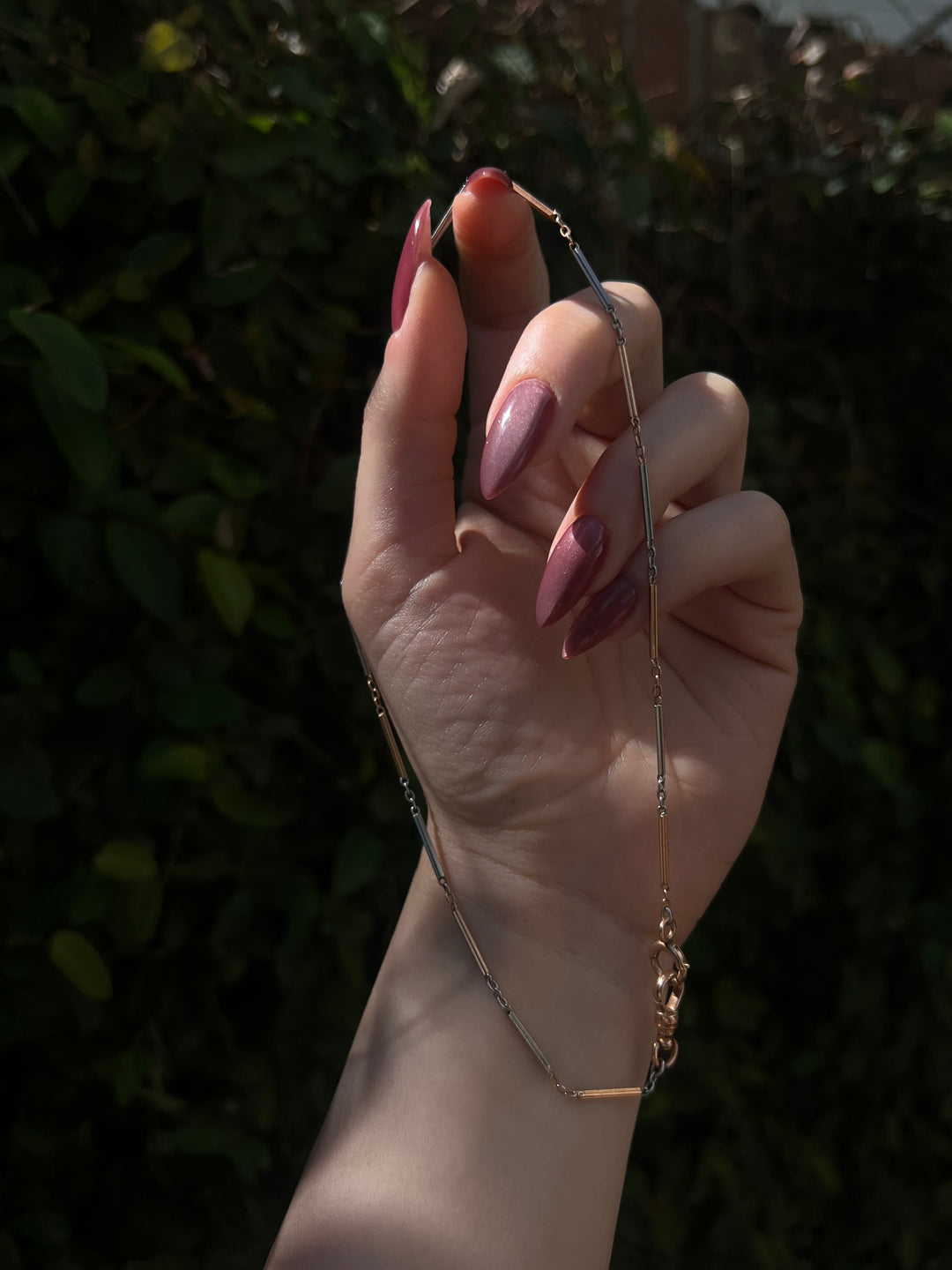C'est Si Bon 👑✨
This week we have some stunning 18th-19th century treasures that we cannot help but find making our last weeks of summer just a little bit sweeter. From the brilliant old-mine-cut paste to the rare early 18th century pearl bow drop, luster and glimmer are covered; but we couldn’t really experience my peculiar brand of saccharine indulgence without a coral cameo in the mix… And my-oh-my do we have one!!! Circa 1822, this beauty has her hair up in an Austinian period pony-tail! Don’t miss the emeralds, the citrine, or, for my true antiquarians, the baltic amber Georgian fob; the amber is over 40 million years old… the bead is likely an earlier find that was used to complete this early 19th c watch key! C’est si bon, indeed!

This first piece is a Sumptuous Early 18th C Pearl Bow with Torpedo Drop. Since the Victorian era stretched over six decades, many types of jewelry came and went in style. Mass production made jewelry available to the widest number of buyers in the broadest range of designs ever seen before in history. When it came to formal occasions, the "more is better" theme of the Victorian era carried over into how jewelry was worn by royalty and the aristocracy. Paintings of Queen Victoria and other royals at state occasions show multiple brooches, swags, earrings, bracelets, and hair ornaments. But the jewelry of the everyday folk is collectible, fascinating and a lesson in history that enchants us even today. I absolutely love this gorgeous bow-topped pendant! Circa 1750, this rare and exceptional English jewel of the finest 18k quality has been very well rendered, a near impossible find, this period and style are quite elusive. Fresh in from London!

Next, a Stunning 1830s Coral Cameo Ring. The use of cameos in necklaces, earrings, bracelets, brooches, and rings is one of the most prolific jewelry motifs used throughout the Victorian Era. Though they pre-date the Victorian era, for the travel-loving Victorians a cameo was a favorite, possibly representing a meaningful souvenir of a Grand European Tour. They were also equally worn between men and women. An expertly rendered conversion, this wonderful Coral cameo is an excellent example of the finest, subtle cameo carving that the Austinian period is known for. In 12k, with a 14k shank, this beautiful example has a sumptuous frame, classic to the simplistic opulence of the 1820’s + 30’s.

Following up with an Emerald and Pearl 15k Ring Hallmarked for 1876. During the Early Victorian period when the Industrial Revolution surged ahead Romantic Period jewelry was very sentimental. It often reflected the new love of a young couple. Gemstones were often set in claw-like prongs or collet settings, a metal that encircled the outer rim of the gemstone, and were used in a wide variety during this period. A stunning burning 15k treasure hallmarked for Birmingham, this sumptuous find has two diamond-shaped emeralds and is studded with pearls above a scrolling gallery. Delicate band details characterize the fine craftspersonship of the time.

Lastly, we have a Superb Old Mine Cut 'Diamond' Paste Earrings in 14k. Paste jewelry became most popular in the 18th century as an alternative to the expensive gems so loved by the upper class. Georges Frederic Strasse, a French jeweler, developed the rhinestone called "strass." Using bismuth and thallium, he was able to make the glass "paste" more refractive and added metal salt to change colors. These creations came in a variety of styles and colors. For centuries, paste has made a more affordable jewelry option for those who could not pay for the luster of a diamond. In fact, many people desired paste jewelry in its own right. It was valued as its own art form, rather than simple imitation. The trend continued into the late 19th century, and even today we can find paste jewels! A delightful pair of early 20th century closed back, foiled studs! This beautiful pair is English in origin with chunky OMC paste stones! They have a beautiful refraction, and truly do look like earrings when worn!





Leave a comment